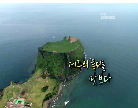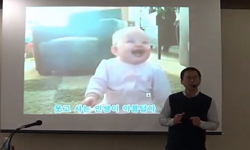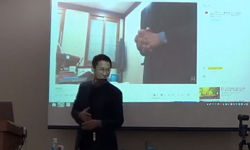본 논문은 일제강점기 전라남도 담양 지역의 대표적인 부호이자 지주, 기업가였던 국채웅(鞠埰雄, 1871~1949)의 생애와 사회적 기여를 분석한다. 국채웅은 경제적 활동을 중심으로 지역 사회 ...
http://chineseinput.net/에서 pinyin(병음)방식으로 중국어를 변환할 수 있습니다.
변환된 중국어를 복사하여 사용하시면 됩니다.
- 中文 을 입력하시려면 zhongwen을 입력하시고 space를누르시면됩니다.
- 北京 을 입력하시려면 beijing을 입력하시고 space를 누르시면 됩니다.

일제강점기 국채웅의 생애와 사회적 기여 = A Study on the Life and Social Contributions of Guk Chae-ung during the Japanese Colonial Period
한글로보기https://www.riss.kr/link?id=A109634551
-
저자
이성수 (불교신문)
- 발행기관
- 학술지명
- 권호사항
-
발행연도
2025
-
작성언어
Korean
-
주제어
Guk Chae-ung ; Japanese colonial period ; Damyang ; Guk Seong-hae ; Bongnyeogwan ; Jeju ; Gwaneumsa Temple ; 국채웅 ; 일제강점기 ; 담양 ; 국성해 ; 봉려관 ; 제주 ; 관음사
-
등재정보
KCI등재
-
자료형태
학술저널
-
수록면
207-236(30쪽)
- 제공처
-
0
상세조회 -
0
다운로드
부가정보
국문 초록 (Abstract)
그의 경제적 성공은 교육과 문화 분야의 후원으로 이어졌다. 담양유치원을 설립하고, 조선민립대학 기성회 활동을 지원하며 지역 내 교육 발전을도왔다. 또한 일본 유학생을 후원하며 지식인 양성에 기여했다. 여성 교육의 중요성을 인식하여 농촌 중견부인양성소를 설립하였다.
국채웅의 불교 후원 활동은 그의 사회적 기여에서 중요한 부분을 차지한다. 그는 단순한 신자의 역할을 넘어, 불교계의 주요 사찰 중창 및 재정적 지원을 아끼지 않았다. 특히, 백양사와 제주 관음사의 불사에 적극적으로 기부하며 불교 발전에 기여하였다. 불교 후원은 개인적인 신앙심에서 출발했지만, 딸이 비구니로 출가한 이후 더욱 적극적인 형태로 전개되었다. 국채웅은 불교가 사회적 안정과 교육적 역할을 수행할 수 있다고 믿었으며, 사찰이 지역 사회에서 교육과 구제 활동을 펼칠 수 있도록 다양한 지원을 제공하였다.
그러나 국채웅의 활동이 항상 긍정적으로 평가되는 것은 아니다. 당시 대지주로서의 역할로 인해 노동조합과의 갈등 및 소작농과의 대립이 존재하였다. 이는 일제강점기 지역 사회 내 지주 계층이 직면한 전형적인 문제로, 국채웅 역시 이러한 논란에서 자유로울 수 없었다.
본 연구는 국채웅의 다양한 활동을 통해 일제강점기 지역 유지의 역할과복합성을 조명하며, 그의 경제 ․ 사회적 기여가 한국 근대화 과정에서 가지는 의미를 분석한다. 특히 불교 후원 활동을 단순한 종교적 기부가 아닌, 사회적 기반 조성을 위한 전략적 후원으로 조명하면서, 불교가 조선 사회에서수행한 역할과 그 의의를 탐구한다. 이를 통해 일제강점기 조선 지역 사회에서 유지 계층이 불교를 활용하여 어떻게 지역 발전을 도모했는지를 분석하는 중요한 시사점을 제공한다.
본 논문은 일제강점기 전라남도 담양 지역의 대표적인 부호이자 지주, 기업가였던 국채웅(鞠埰雄, 1871~1949)의 생애와 사회적 기여를 분석한다. 국채웅은 경제적 활동을 중심으로 지역 사회 발전에 기여한 인물로, 대규모 농지 경영과 상업 활동을 통해 지역 경제에 큰 영향을 미쳤다. 그는 1935년 우송농장을 설립하여 농업 경영을 체계화하였고, 담양상회를 운영하며 상업과 금융 분야에서도 두각을 나타냈다.
그의 경제적 성공은 교육과 문화 분야의 후원으로 이어졌다. 담양유치원을 설립하고, 조선민립대학 기성회 활동을 지원하며 지역 내 교육 발전을도왔다. 또한 일본 유학생을 후원하며 지식인 양성에 기여했다. 여성 교육의 중요성을 인식하여 농촌 중견부인양성소를 설립하였다.
국채웅의 불교 후원 활동은 그의 사회적 기여에서 중요한 부분을 차지한다. 그는 단순한 신자의 역할을 넘어, 불교계의 주요 사찰 중창 및 재정적 지원을 아끼지 않았다. 특히, 백양사와 제주 관음사의 불사에 적극적으로 기부하며 불교 발전에 기여하였다. 불교 후원은 개인적인 신앙심에서 출발했지만, 딸이 비구니로 출가한 이후 더욱 적극적인 형태로 전개되었다. 국채웅은 불교가 사회적 안정과 교육적 역할을 수행할 수 있다고 믿었으며, 사찰이 지역 사회에서 교육과 구제 활동을 펼칠 수 있도록 다양한 지원을 제공하였다.
그러나 국채웅의 활동이 항상 긍정적으로 평가되는 것은 아니다. 당시 대지주로서의 역할로 인해 노동조합과의 갈등 및 소작농과의 대립이 존재하였다. 이는 일제강점기 지역 사회 내 지주 계층이 직면한 전형적인 문제로, 국채웅 역시 이러한 논란에서 자유로울 수 없었다.
본 연구는 국채웅의 다양한 활동을 통해 일제강점기 지역 유지의 역할과복합성을 조명하며, 그의 경제 ․ 사회적 기여가 한국 근대화 과정에서 가지는 의미를 분석한다. 특히 불교 후원 활동을 단순한 종교적 기부가 아닌, 사회적 기반 조성을 위한 전략적 후원으로 조명하면서, 불교가 조선 사회에서수행한 역할과 그 의의를 탐구한다. 이를 통해 일제강점기 조선 지역 사회에서 유지 계층이 불교를 활용하여 어떻게 지역 발전을 도모했는지를 분석하는 중요한 시사점을 제공한다.
다국어 초록 (Multilingual Abstract)
His financial success extended to supporting education and cultural development. He founded Damyang Kindergarten, actively participated in the Korean Private University Association, and sponsored students studying in Japan. Recognizing the importance of women's education, he established the Rural Women's Training Center and contributed to the preservation of traditional culture by sponsoring the pansori master Park Dong-sil.
A major aspect of his social contribution was his patronage of Buddhism, which played a crucial role in his philanthropic activities. In addition to being a devout believer, he was actively involved in temple restoration and provided financial support to Buddhist institutions. He sponsored the renovation of Baekyangsa and Gwaneumsa Temples in Jeju, contributing significantly to the Buddhist revival movement. His support for Buddhism was not merely a personal religious expression, but a strategic effort to use Buddhism as a tool for social stability and education.
His Buddhist patronage intensified after his daughter became a Buddhist nun, deepening his engagement with the monastic community. He firmly believed that Buddhism could serve as an agent of social welfare and education, providing financial and structural support for temples to function as centers of education and relief activities. Guk Chae-ung was not merely a donor but also a visionary supporter who saw Buddhism as a key element in regional development.
However, his contributions were not without controversy. As a large landowner, he faced conflicts with labor unions and tenant farmers, reflecting the broader socio-economic tensions of the time.
This study analyzes the multifaceted role of regional elites in the colonial period, focusing on Guk Chae-ung's contributions to Buddhism beyond mere financial sponsorship. By examining how he leveraged Buddhism for social development and stability, the study offers valuable insights into the broader role of Buddhism in Korean society during the Japanese occupation.
This study examines the life and social contributions of Guk Chae-ung (鞠 埰雄, 1871-1949), a prominent landlord, entrepreneur, and philanthropist in Damyang, Jeollanam-do, during the Japanese colonial period. Guk Chaeung played a significant role ...
This study examines the life and social contributions of Guk Chae-ung (鞠 埰雄, 1871-1949), a prominent landlord, entrepreneur, and philanthropist in Damyang, Jeollanam-do, during the Japanese colonial period. Guk Chaeung played a significant role in regional economic development through large-scale agricultural and commercial enterprises. He established Useong Farm in 1935, systematized land management, operated Damyang Sanghoe, and expanded his business to commerce and finance.
His financial success extended to supporting education and cultural development. He founded Damyang Kindergarten, actively participated in the Korean Private University Association, and sponsored students studying in Japan. Recognizing the importance of women's education, he established the Rural Women's Training Center and contributed to the preservation of traditional culture by sponsoring the pansori master Park Dong-sil.
A major aspect of his social contribution was his patronage of Buddhism, which played a crucial role in his philanthropic activities. In addition to being a devout believer, he was actively involved in temple restoration and provided financial support to Buddhist institutions. He sponsored the renovation of Baekyangsa and Gwaneumsa Temples in Jeju, contributing significantly to the Buddhist revival movement. His support for Buddhism was not merely a personal religious expression, but a strategic effort to use Buddhism as a tool for social stability and education.
His Buddhist patronage intensified after his daughter became a Buddhist nun, deepening his engagement with the monastic community. He firmly believed that Buddhism could serve as an agent of social welfare and education, providing financial and structural support for temples to function as centers of education and relief activities. Guk Chae-ung was not merely a donor but also a visionary supporter who saw Buddhism as a key element in regional development.
However, his contributions were not without controversy. As a large landowner, he faced conflicts with labor unions and tenant farmers, reflecting the broader socio-economic tensions of the time.
This study analyzes the multifaceted role of regional elites in the colonial period, focusing on Guk Chae-ung's contributions to Buddhism beyond mere financial sponsorship. By examining how he leveraged Buddhism for social development and stability, the study offers valuable insights into the broader role of Buddhism in Korean society during the Japanese occupation.
동일학술지(권/호) 다른 논문
-
- 동국대학교 불교문화연구원
- 신현숙
- 2025
- KCI등재
-
- 동국대학교 불교문화연구원
- 조기룡
- 2025
- KCI등재
-
本草綱目』과 『金光明經』의 病因과 除病에 대한 비교연구 - 계절, 오행, 오미, 오장, 맛(음식), 병의 관련성을 중심으로 -
- 동국대학교 불교문화연구원
- 장재진
- 2025
- KCI등재
-
- 동국대학교 불교문화연구원
- 김동일
- 2025
- KCI등재




 DBpia
DBpia






